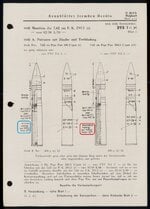Shortround6
Lieutenant General
Part of the bargain was the lower combat value.Valentine is a bargain. When 1st available, it was half a price of the Matilda II with the same gun, and just a slightly less armor thickness.
The Matilda had a 4th crewman from the start, not until the Valentine MK III did they get 3 man turret, which was after 1800 of the 2 man turret tanks were built.
The Matilda carried more main gun ammo, about 17% more.
It had better vision for commander, not much, but anything was an improvement.
The Matilda had more range.
The Valentine was a better value, you did not the same combat capability for 1/2 the price.
And two tanks to carry almost the same amount of ammo into battle as a single larger tank is seldom the bargain it appears. A tank is a tank may appeal to the accountants but trying to deal with lots of tanks that carry a small war load and need either replenishment on site or need to withdraw from the battle for replenishment complicates logistics/battle planning. Lots of small cheap tanks shuttling in and out of the battle to replenish means how many actually fighting the battle at any one time? Granted there were times when Shermans had to leave a fight in order to replenish.
In the 1930s you have to deal with doctrine/requirements and little or no combat experience. Or little post WW I experience.
British MK IV male tanks carried up to 332 rounds for their two 6pdr guns. Really makes one wonder about the lack of HE support from the 2pdr armed tanks. German MK IIIE with 37mm carried up to 131 rounds of 37mm (granted a mix of AP and HE) and 4500 rounds of machine gun ammo.


